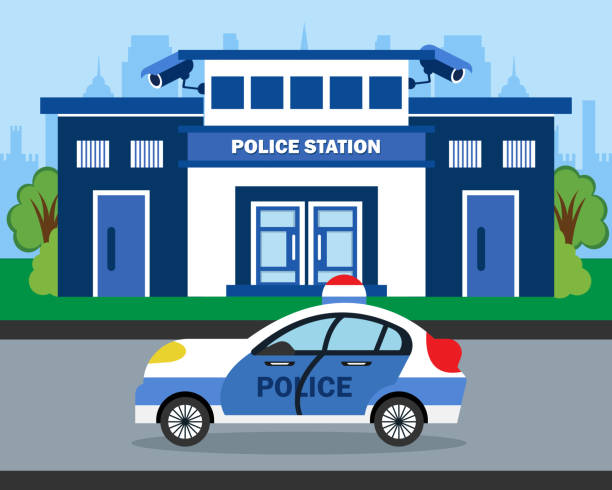A lot goes into creating the police vehicle graphics you see on a daily basis. While the colors and fonts may be relatively simple, rest assured a lot of thought and strategy goes into creating designs. Much of the strategy used for creating these designs comes down to ensuring optimal visibility and impact.
With that in mind, today we’re going to tell you all about the best practices to follow to make sure your police vehicle graphics make the impression you want them to.
Police Car Graphics 101
Compelling police car graphics are crucial for community safety, law enforcement visibility, and establishing a solid brand identity for the police department. This step-by-step guide will walk you through the entire process of creating impactful and compliant police car graphics, ensuring your fleet stands out while adhering to regulations.
Step 1: Research and Planning
Understand Regulations
Before you start the design process, research local, state, and federal laws for police car graphics. This may include permitted colors, materials that can be reflective or not, or where certain images should be placed. Knowing these guidelines will help ensure your design is effective and legal.
Define Objectives
Clearly define what the design hopes to achieve. Improving visibility? Building a strong brand identity? Does it need to foster better community relations? Having specific objectives in mind will guide decision-making throughout the process and allow for the measurement of success post-implementation.
Analyze Best Practices
Look at what has worked elsewhere. Find good models among other departments’ use of police car graphics.
For example, are there particular color schemes that have been especially successful? What kinds of reflective materials work best under different circumstances? Which typographical choices make text most readable from afar?
Answering these questions provides a robust starting point for one’s own design efforts.
Step 2: Conceptualization
Color Scheme
- High Visibility Colors: Neon yellow, green, or orange are often combined with black/white/blue for police vehicle graphics. Using traditional colors in conjunction with high-visibility shades offers maximum visibility during low-light situations.
- Contrast: Ensure the base color of police cars has high contrast against their graphic so they can easily seen from far away.
Reflective Elements
- Reflective Stripes: Stripes on the sides, hood, and rear of the vehicles should be most visible when light shines directly upon them (e.g., headlights). This increases night visibility and visibility in bad weather conditions, too.
- Reflective Decals: Take care to ensure critical text and logos don’t disappear under poor lighting conditions where regular signage fails.
Typography
- Font Selection: Bold fonts enhance readability even when viewed from a distance, and Sans Serif typefaces (like Helvetica, Arial, and Impact) work best because they are simple yet recognizable.
- Size and Placement: Important words such as “POLICE,” the department name, and emergency contact details should be displayed on the vehicle so they can be easily read even at a considerable distance. Make sure these texts are large enough for easy readability.
Logos and Badges
- Improve the appearance of the police department’s logo and badges by giving them a more modern and minimalist look. Updated logos can make a big difference in the department’s brand image!
- Place logos and badges in locations where they can be easily seen, including doors, hoods, and trunks. Typically, they are mounted on both sides of the vehicle and often on the hood and trunk of police vehicles, too.
Patterns and Graphics
- Use diagonal stripes or chevron patterns to increase visibility and create a visually interesting design for the car.
- Apply side graphics that follow the shape of the vehicle to keep it looking smooth and professional.
Step 3: Design Development
Sketching and Mockups
- Rough Drafts: Produce various rough drafts of your design concepts. These rough drafts will become the basis for your digital mockups.
- Computerized Mockups: Building digital mockups with design software (like Adobe Illustrator or CorelDRAW) is up next. These programs allow you to see how the design looks on the car and modify it accordingly.
Color Tests
- Testing for Visibility: In a variety of lighting situations, test out the selected color schemes to ensure they are still visible and efficient.
- Testing for Reflectivity: Test that reflective materials work well in poorly lit areas so they can be seen from far away during the night.
Prototyping
- 3D Models: Create 3D models of the vehicle with graphics added to see what it will look like from different views. This is where you can spot any problems before finishing your design.
Step 4: Finalizing the Design
Detailed Design
- High-Resolution Art: Create high-resolution art for every element in the design. Good quality graphic elements are necessary for a professional look and long-lasting graphics.
- Exact Measurements: Make sure all measurements are precise and will fit the exact models of vehicles used by their police department.
Approval Process
- Stakeholder Check: Pass the final design to departmental chiefs and other officials for endorsement.
- Compliance Review: Verify that the design meets all standards required by law or regulations to avoid legal trouble down the road.
Step 5: Creating Design Assets
Vector Files
- Scalable Graphics: To make them scalable without losing quality, create vector files for all design elements. It is important to keep the integrity of your design intact, no matter what size it is resized to.
- Layered Files: Keep layered files for easy editing and future adjustments. Making updates and modifications is easier thanks to this flexibility.
Print-Ready Files
- CMYK Color Mode: For a precise printout, adjust the format files into the CMYK color mode. It guarantees that the colors in digital design match those in printing.
- Bleed and Cut Lines: To make it fit correctly, put some more bleed area and cut lines on the artwork. This creates an accurate application guide when trimming graphics so they fit just right.
Step 6: Testing and Feedback
Mockup Application
- Test The Police Vehicle Graphics: Evaluate the design of a test vehicle to see if it works in real-world conditions. This is done by applying graphics to the car. Doing this helps reveal any practical problems that may not be obvious in digital mockups.
- Testing Visibility: Test how well the design can be seen under different circumstances, including daytime, night time, or foggy weather.
Step 7: Final Adjustments and Rollout
- Design Tweaks: Do some revisions according to the feedback you receive during testing.
- Rollout Plan: Produce a comprehensive strategy for implementing new police car graphics. The plan should include deadlines, required supplies, and other measures that guarantee uniformity and professionalism in the look of every vehicle.
Start Creating Impactful Police Car Graphics
Making effective police car graphics involves a lot of planning. Just remember, the idea is to increase community safety, raise awareness about law enforcement, and create a strong brand identity for your department.
Explore their services and contact the team at Graphic Designs International. They will work with you to elevate your police department’s visual presence and impact!

